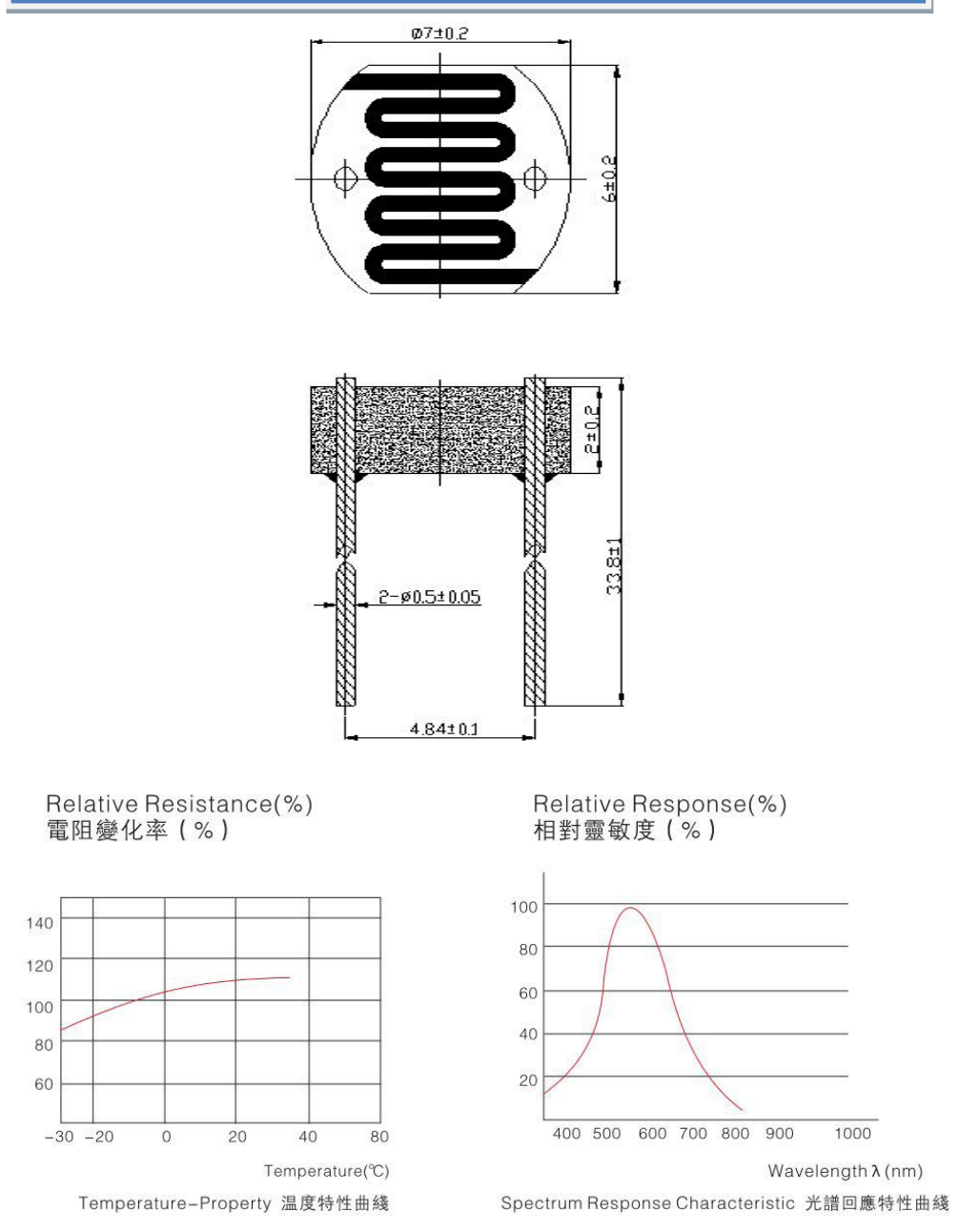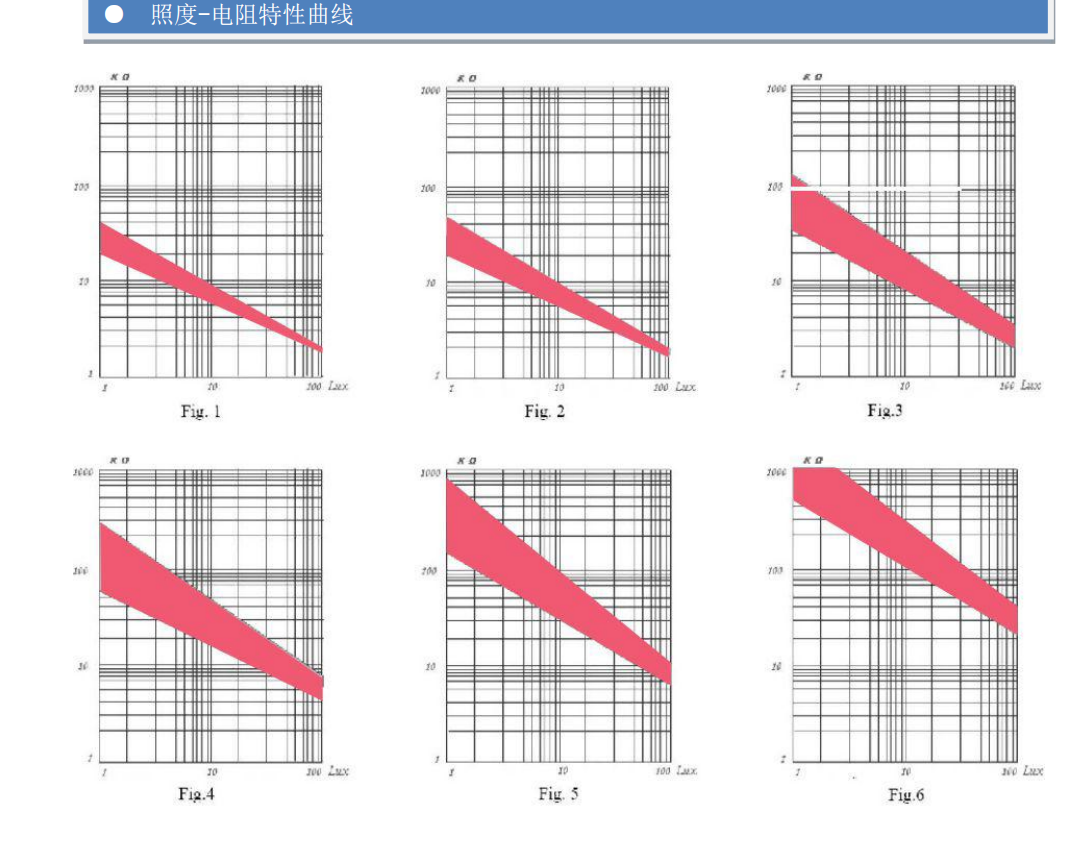
PROD Model:φ7
Maximum Applied Voltage: the maximum voltage that can be continuously applied to a component in the dark
Dark Resistance: resistance value at 10 seconds after 10Lux illumination is turned off
Maximum Power Consumption: maximum power consumption when the ambient temperature is 25 ° C
Bright Resistance: after 2 hours of exposure with 400-600Lux light, the
test value under 10Lux light of standard light source (color temperature
2856K)
γ Value: logarithm of the ratio of the standard resistance value at 10Lux illuminance to 100Lux illuminance
γ= Lg(R10/R100) /Lg (100/10) =Lg(R10/R100)
A photoresistor is a resistance made of a
semiconductor material whose conductivity changes with the change of
illuminance. This feature is used to make photoresistors of different
shapes and light-receiving areas. Photoresistors are widely used in
toys, lamps, cameras and other industries.
Epoxy encapsulation
Good reliability
Small size
High sensitivity
Fast response
Good spectral characteristics


Design considerations
Photoresistors are less light-sensitive devices than photodiodes or phototransistors: the two latter components are true semiconductor devices, while a photoresistor is a passive component and does not have a PN-junction. The photoresistivity of any photoresistor may vary widely depending on ambient temperature, making them unsuitable for applications requiring precise measurement of or sensitivity to light photons.
Applications
Photoresistors come in many types. Inexpensive cadmium sulfide cells can be found in many consumer items such as camera light meters, clock radios, alarm devices (as the detector for a light beam), nightlights, outdoor clocks, solar street lamps and solar road studs, etc.
FAQ
1.What is an LDR (Light Dependent Resistor)?
An LDR is a component that has a (variable) resistance that changes with the light intensity that falls upon it. This allows them to be used in light sensing circuits.
| Specification | Type | Maximum Voltage | Maximum power | Environmental Temp. | Spectrum peak value | Light resistance(10Lux)(KΩ) | Dark resistance(MΩ) | Response time(ms) | |
| Increase | Decrease | ||||||||
| φ7 series | GL7516 | 150 | 100 | -30~+70℃ | 540 | 5- 10 | 0.5 | 30 | 30 |
| GL7528 | 150 | 100 | -30~+70℃ | 540 | 10- 20 | 1 | 30 | 30 | |
| GL7537-1 | 150 | 100 | -30~+70℃ | 560 | 20- 30 | 2 | 30 | 30 | |
| GL7537-2 | 150 | 100 | -30~+70℃ | 560 | 30- 50 | 4 | 30 | 30 | |
| GL7539 | 150 | 100 | -30~+70℃ | 560 | 50- 100 | 8 | 30 | 30 | |